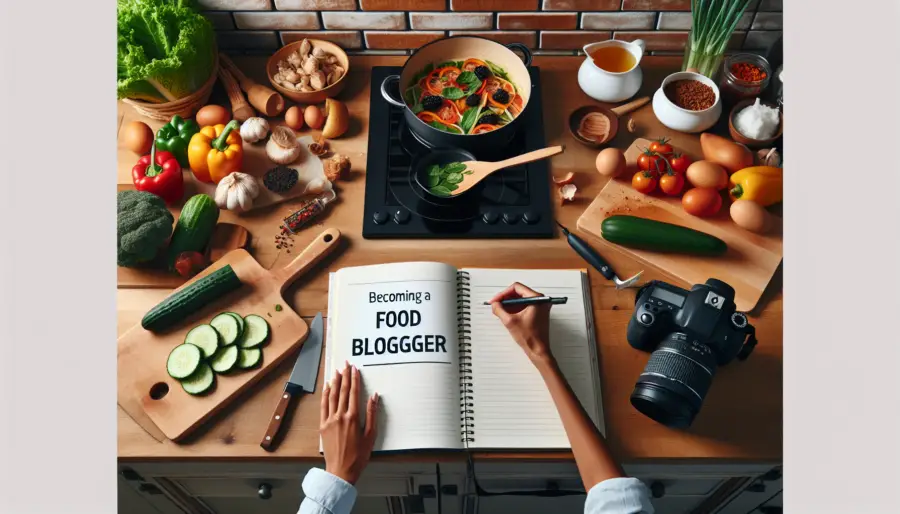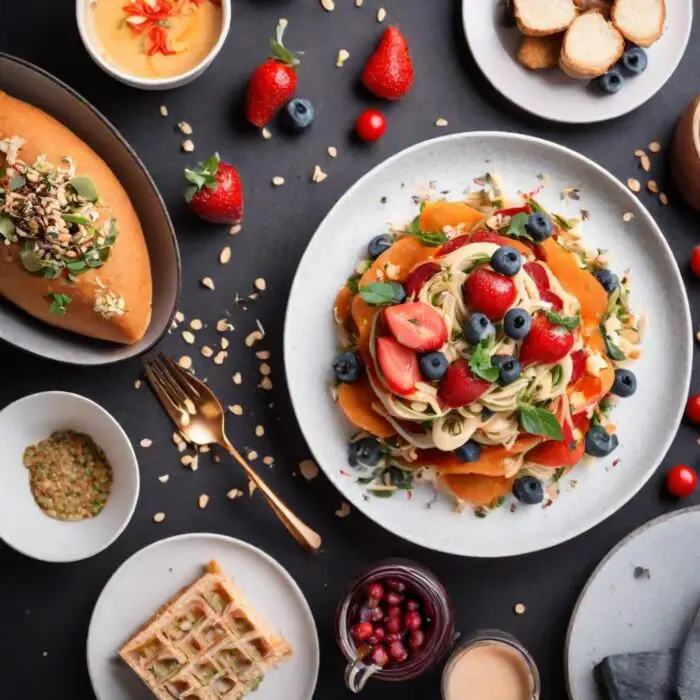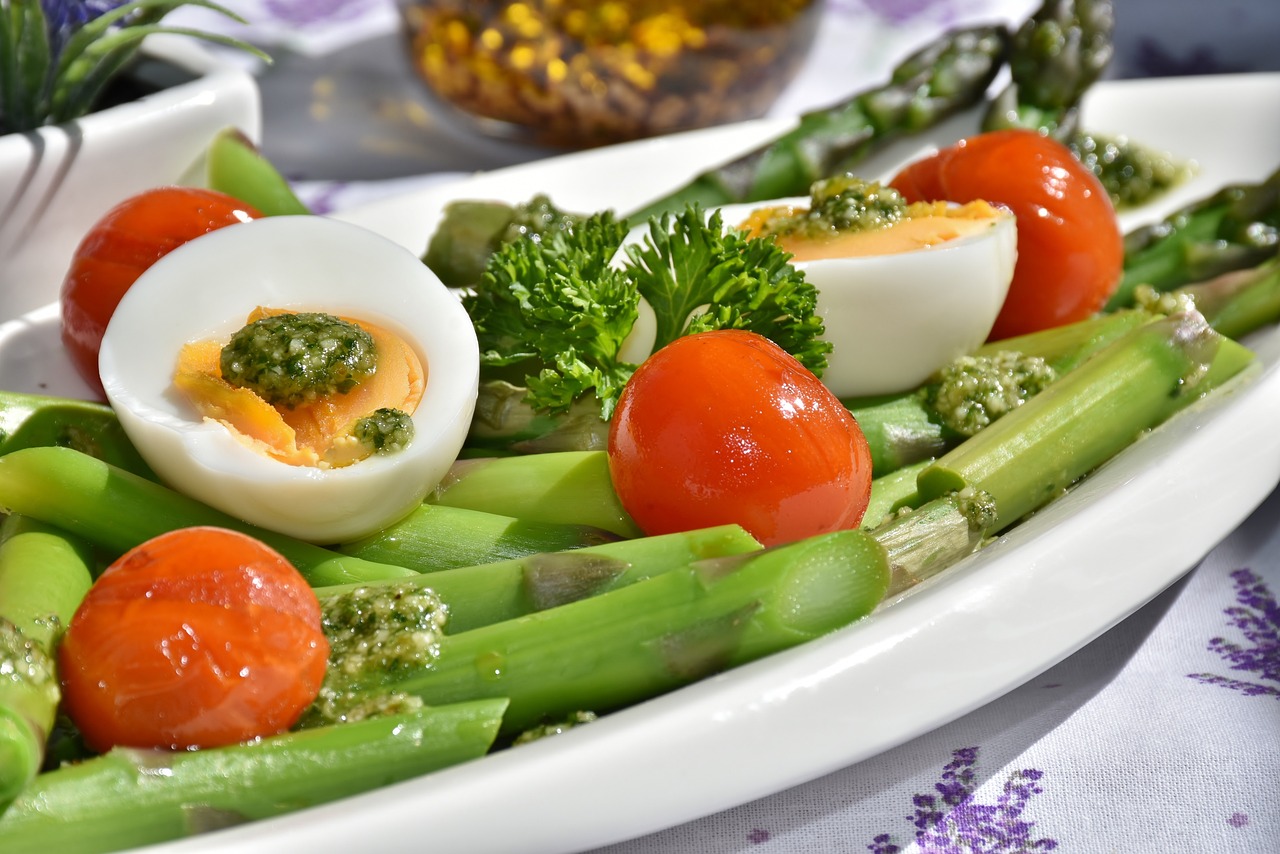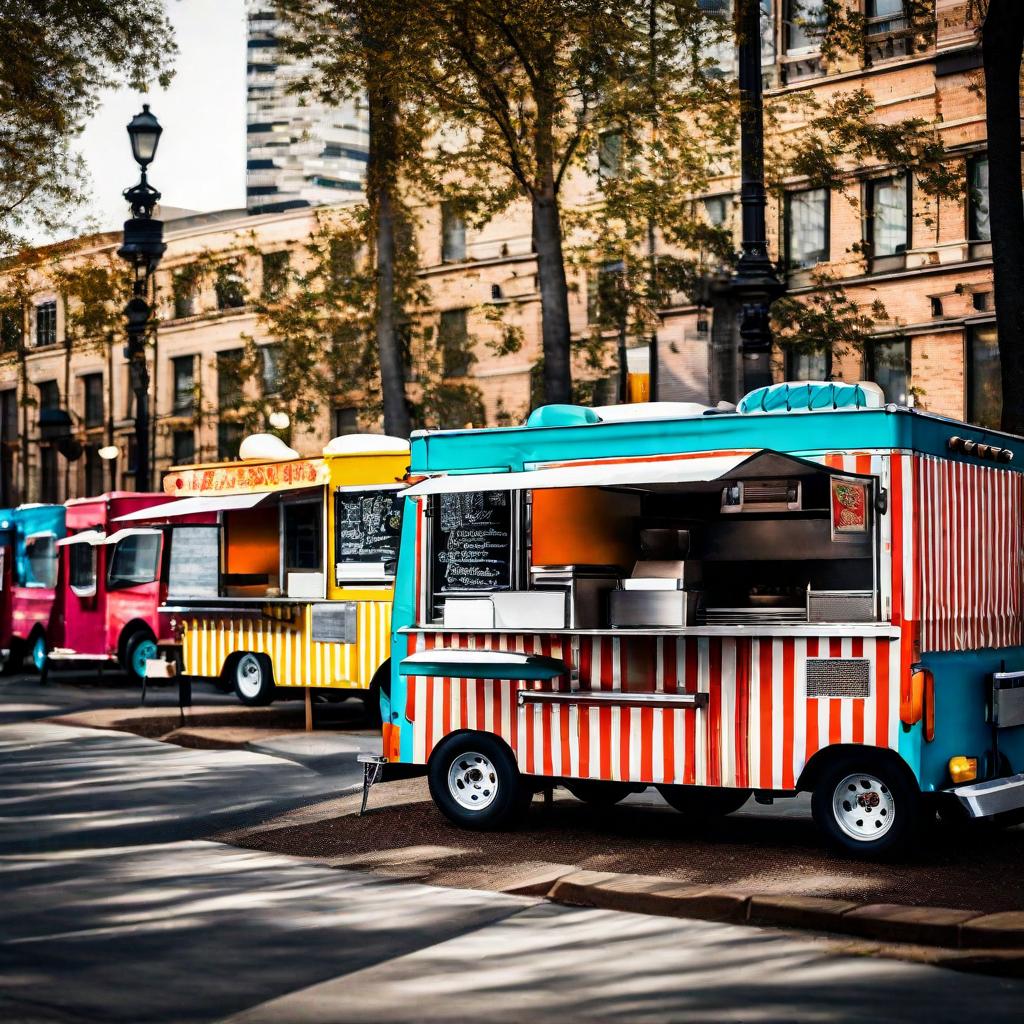
A food blogger’s image
Embarking on the journey of how to be a food blogger is a thrilling venture that blends a passion for food and creativity in writing, culminating in a platform that can potentially turn into a full-time culinary writing profession. A food blog is a digital canvas where individuals share recipes, culinary insights, restaurant reviews, and cherished food products.
This space not only allows for the sharing of personal food narratives but also provides an opportunity to establish authority in the culinary world, making it an engaging pursuit for many 2. With successful examples like Pinch of Yum and Damn Delicious lighting the way, the path of how to start a food blog comes with the promise of turning a love for cuisine into a rewarding online presence.
Starting a food blog requires a concoction of dedication, hard work, and a sprinkle of finesse, ensuring that each step, from conceptualizing the idea to engaging with a growing community, is approached with consistency and passion. Essential to this process is not only a fervent love for food and writing but also acquiring skills such as computer literacy and conducting thorough research on blogging fundamentals.
Choosing the right website or domain name further lays the foundation for a successful food blog. As readers embark on this flavorful expedition, they will discover the ingredients needed to cultivate a distinguished and engaging food blog that resonates with their audience and stands out in the digital culinary landscape.
Identifying Your Niche and Audience
Identifying your niche and understanding your audience are foundational steps in the journey of how to be a food blogger. These elements not only guide the development of your content but also ensure that your blog resonates with the right audience. Here’s a breakdown of how to approach this crucial phase:
- Finding Your Niche:
- Expertise and Passion: Consider areas where your culinary expertise and passions intersect. Whether it’s a specific type of cooking, ingredient, or cuisine, your niche should reflect something you’re knowledgeable and passionate about.
- Functional vs. Belief Niches: Determine if your niche is functional (focused on a specific topic like vegan recipes or Italian cuisine) or belief-based (centered around a core belief you hold about food). Often, a combination of both types can provide a unique perspective.
- Competition and Authority: While competition indicates a healthy interest in your niche, finding a balance where you can still stand out is key. Aim for a niche where you can become an authoritative voice, offering unique insights or approaches.
- Understanding Your Audience:
- Demographics and Interests: Define who your ideal readers are by considering their demographics, interests, and what they seek in a food blog. This could include age, dietary preferences, cooking skill level, and cultural interests.
- Engagement and Community: Listen to your audience and engage with them. Use social media, comments, and direct feedback to learn about their preferences, challenges, and what content resonates the most. This two-way interaction helps tailor your content to meet their needs better.
- Keyword Research: Conduct keyword research to uncover the phrases and questions your target audience uses when searching for food-related content online. This not only helps in creating relevant content but also aids in optimizing your blog for search engines.
- Technical and Strategic Considerations:
- SEO Understanding: Grasp the basics of SEO to ensure your content reaches its intended audience. Google’s preference for experts in specific niches underscores the importance of a well-defined niche.
- Networking and Collaboration: Connect with other food bloggers to learn from their experiences, share insights, and potentially collaborate on projects. This network can be invaluable for growth and learning.
- Patience and Consistency: Recognize that building a successful food blog is a long-term endeavor. Consistency in content quality, engagement, and adhering to your niche are crucial for sustained growth.
By carefully selecting a niche that aligns with your expertise and passion, and by understanding the needs and preferences of your audience, you set a strong foundation for your food blog. This strategic approach not only helps in creating content that resonates with your readers but also positions your blog for success in the competitive food blogging landscape.
Content Strategy and Planning
To devise a successful content strategy and planning for your food blog, consider the following steps:
- Content Planning:
- Daily Task List: Start by making a daily list of tasks and to-dos related to content creation, including recipe development, writing, and photography. Set time limits on each task to enhance productivity and avoid distractions.
- Content Calendar: Decide on the number of posts per week, taking into account any reused content. Calculate the total number of posts needed based on your posting frequency and any planned vacation time. Utilize tools like Google Calendar or Trello for scheduling.
- Batch Content Creation: For efficiency, batch content for photography and recipe development. Combining similar posts can optimize photo shoots and cooking times. Schedule posts based on readiness and photography plans, allowing flexibility for unexpected issues.
- Engagement and Quality:
- Engaging Content: Storytelling is vital. Even if the topics aren’t weighty, your content should be engaging and entertaining. Share personal experiences, explore new places, and provide solutions to common kitchen problems.
- High-Quality Content: Focus on creating unique and long-read content (over 1500 words per post) to attract and retain readers. Quality is key, not just in writing but also in food photography, videos, and originality.
- Technical Aspects:
- Choosing the Right Tools:
- CRM and Hosting: WordPress is highly recommended as a Content Management System (CRM) due to its flexibility and ease of use. For hosting, Bluehost is recommended for its reliability and customer service. These tools are crucial for ensuring your blog runs smoothly 2.
- Domain Name: Your domain should be memorable, easy to pronounce, and type. It’s also essential to ensure it’s available as handles across social media channels to maintain consistency in your branding.
- SEO and Analytics: Understanding the basics of SEO is crucial to ensure your content reaches its intended audience. Use web analytics tools to track key metrics and conduct content audits. This helps in understanding your audience’s preferences and optimizing your content strategy accordingly 13.

Image: bluewilliow
Incorporating these strategies into your content planning and execution will not only help in keeping your message clear and consistent but also ensure your food blog is beautiful, easy to find, and engaging for your audience.
Remember, success in food blogging isn’t just about creating content; it’s about creating content that resonates with your audience’s needs and preferences, all while ensuring a seamless user experience.
Photography and Styling Tips
In the realm of food blogging, captivating photography, and strategic styling play pivotal roles in attracting and retaining readership. Here are some foundational tips to elevate your food photography and styling, ensuring your blog stands out in the digital culinary landscape:
- Lighting and Camera Use:
- Natural Light: Utilize natural light for food photography to avoid harsh shadows and maintain the dish’s natural colors. Shooting in indirect sunlight is recommended over direct sunlight.
- Camera Choice: Start with the camera you have, such as a smartphone or a point-and-shoot, before considering an upgrade. Mobile phone cameras are capable tools for practicing food photography.
- Professional Equipment: For those ready to take their photography to the next level, using a DSLR camera, like the Nikon Z6, offers full control over exposure and focal length. Fixed lenses, such as Nikon’s 35mm f1.8 or 50mm f1.8, are preferred for their sharpness and wide apertures.
- Composition and Styling:
- The Rule of Thirds: Apply the Rule of Thirds to compose aesthetically pleasing and balanced photos. Position important elements in the image to align with the intersections of the grid lines.
- Angles: Experiment with the three main angles for food photography – Table Height Angle, Three-Fourths Angle, and Overhead Angle – to discover which best showcases your culinary creations.
- Styling Essentials: Collect a variety of backgrounds, dishes, and props to create engaging layers in photos with color and texture. Knowing your style and branding is crucial in food styling.
- Editing and Resources:
- Editing Software: Adobe Lightroom is recommended for organizing and editing digital photos, allowing for adjustments in exposure, color balance, and cropping to enhance the visual appeal of your images.
- Educational Resources: For those looking to deepen their knowledge, “Understanding Exposure” by Brian Peterson and “Pinch of Yum Tasty Food Photography eBook” are excellent resources for learning more about the art and science of food photography.
By incorporating these photography and styling tips into your content strategy, you can significantly enhance the visual appeal of your food blog. High-quality images are crucial for attracting attention on platforms like Pinterest, which is a significant source of traffic for food blogs.
Additionally, engaging and visually appealing images can attract social media users, making your posts more shareable and ultimately driving more traffic to your blog. Remember, the goal is to make your culinary creations look as tantalizing online as they do on your plate, inviting readers to explore your recipes and insights further.
Building an Engaged Community
Building a robust and engaged community around your food blog is essential for its growth and sustainability. Here are some strategies to consider:
- Email Marketing and Social Media Engagement:
- Start Building an Email List Immediately: An email list is a powerful tool for direct engagement. Offer valuable incentives and personalize your emails to encourage readers to subscribe and stay engaged with your content.
- Utilize Social Media Wisely: Identify the platforms where your audience is most active. Engage with them by creating compelling visual content, crafting engaging captions, and responding to comments. Platforms like Pinterest, Facebook, and Twitter each offer unique opportunities for promotion and interaction.
- Content Repurposing on Social Media: Use existing content to create new, engaging posts across different platforms. Offer cooking tips, compile food product round-ups, and share personal experiences to inspire and inform your audience.
- Collaborations and Community Building:
- Engage Authentically: Authenticity fosters a loyal following. Promote products you genuinely value and champion others within the food blogging community. This genuine approach helps in building trust and loyalty.
- Contribute and Collaborate: Increase your visibility by contributing to other food blogs or websites. This not only helps in reaching a wider audience but also builds valuable relationships with other bloggers and industry professionals.
- Host Webinars and Podcasts: Engaging your audience through webinars and podcasts can establish your credibility and authority in your niche. These platforms offer a more personal way to connect with your audience and share your expertise.
- Strategic Content Sharing and SEO:
- Optimize for Search Engines: An effective SEO strategy is crucial for drawing visitors to your blog and boosting your online presence and market reach. Sharing unique insights and high-quality content can help in building trust and loyalty with your audience.
- Leverage Food-specific Platforms: Utilize food porn websites like Foodgawker and recipe-sharing websites like Yummly to increase traffic to your blog. These platforms can provide returning traffic and help in showcasing your culinary creations to a broader audience.
- Encourage Social Sharing: Make it easy for readers to share your content on social media. This not only helps in increasing your reach but also in building a community of like-minded individuals who share a passion for culinary delights.
By implementing these strategies, you can effectively build an engaged community around your food blog. Remember, consistency in engaging with your audience and offering valuable, high-quality content is key to sustaining growth and fostering a loyal following.
Monetization Strategies
Monetizing a food blog can be approached through various strategies, each requiring a blend of creativity, consistency, and engagement with your audience. Here are some effective methods:
- Display Advertising:
- Ad Networks: Partner with ad networks such as MediaVine, Google AdSense, or AdThrive. These platforms facilitate the display of ads on your blog, generating revenue based on views or clicks.
- Optimize Ad Placement: Ensure ads are placed strategically across your site to maximize visibility without hindering the user experience. This balance is crucial for retaining readers while benefiting from ad revenue.
- Start Slowly: Initially, integrate ads in a way that they don’t overwhelm your content. As your traffic grows, you can adjust the number and placement of ads accordingly.
- Direct Monetization through Products and Services:
- Sell Your Own Merchandise: Consider offering branded items like aprons, totes, or kitchenware. This requires identifying products, designing them, researching suppliers, setting prices, and establishing an online store.
- Online Courses and Workshops: Share your culinary expertise through paid online courses or virtual cooking workshops. This involves brainstorming content ideas, selecting a course builder tool, and creating multimedia content.
- Subscription Models: Create a membership program offering exclusive content or services. This could include premium recipes, videos, or personalized cooking advice, providing consistent value to your subscribers.
- Partnerships and Affiliate Marketing:
- Sponsored Content and Brand Partnerships: Collaborate with brands for sponsored posts or recipe features. Ensure these collaborations offer value to your readers and fit naturally within your content.
- Affiliate Marketing: Include affiliate links within your recipes or blog posts. Partner with programs like ShareASale, Commission Junction, and Amazon Associates to earn a commission for each sale made through your links.
- Collaborate with Local Businesses: Engage in mutual promotions and sponsorships with local restaurants or food-related businesses. This not only diversifies your income but also strengthens your connections within the local food community.
By diversifying your income sources and strategically implementing these monetization strategies, you can transform your passion for food blogging into a sustainable source of income. Remember, the key to successful monetization lies in offering genuine value to your audience, maintaining transparency, and ensuring that all monetization efforts align with your brand and content strategy.
Conclusion
Venturing into the world of food blogging is a multifaceted journey that calls for a blend of passion, creativity, and dedication. Through the meticulous planning of unique content, engaging visuals, and fostering a community, we have navigated the core components that contribute to a thriving food blog.
This endeavor demands not only a profound love for cuisine and storytelling but also emphasizes the importance of computer literacy, thorough blogging research, and selecting an appropriate website or domain name. These foundational elements lay the groundwork for connecting with your audience and carving out a distinctive space in the digital culinary universe.
As our exploration concludes, it is imperative to reflect on the broader implications of establishing a successful food blog. The journey doesn’t end with publishing content; it is about creating a lasting impact that inspires, educates, and connects with fellow food enthusiasts across the globe.
For those embarking on this flavorful expedition, continuous learning, adapting, and the willingness to delve deeply into the blogging craft are essential. It is within this journey that one discovers the true essence of being a food blogger—where each recipe, photograph, and story shared becomes a part of the larger tapestry of the culinary world, inviting further exploration, innovation, and connection.
FAQs
How to Begin Your Journey as a Food Blogger
What are the initial steps to becoming a food blogger? To start a food blog, you should first identify a specific niche that aligns with your interests, such as a particular type of cuisine or budget-friendly cooking tips.
Next, choose a memorable domain name and select a reliable web hosting service. Installing blogging software is your next step, followed by choosing an attractive theme and essential plugins. Finally, you can begin creating and posting content.
Essential Equipment for Starting a Food Blog
What equipment is necessary for launching a food blog? To ensure your food blog has visually appealing content, you will need a quality camera, proper lighting, and an attractive backdrop.
If purchasing a digital SLR camera is not within your budget at the moment, you can still achieve great results with a smartphone camera, natural lighting, and well-chosen backgrounds to enhance the presentation of your food.
Preparations Before Embarking on a Blogging Career
What should I consider before starting a blog? Before diving into blogging, it’s important to decide on your blog’s focus. Research other blogs within your chosen niche to understand the competition and gather ideas.
Plan the structure of your blog and brainstorm potential post topics. Consider how your blog might generate income and decide whether you’ll opt for a hosted or self-hosted platform. Finally, choose your hosting service carefully.
Starting a Food Blog Without Prior Experience
How can I become a food blogger if I have no previous experience? If you’re passionate about food and eager to share that passion with others, starting a food blog is possible with minimal experience. A smartphone capable of taking quality photos and accessing social media apps can be all you need to begin. While some bloggers prefer using a computer or laptop for more extensive tasks, many successfully manage their blogs directly from their phones.





